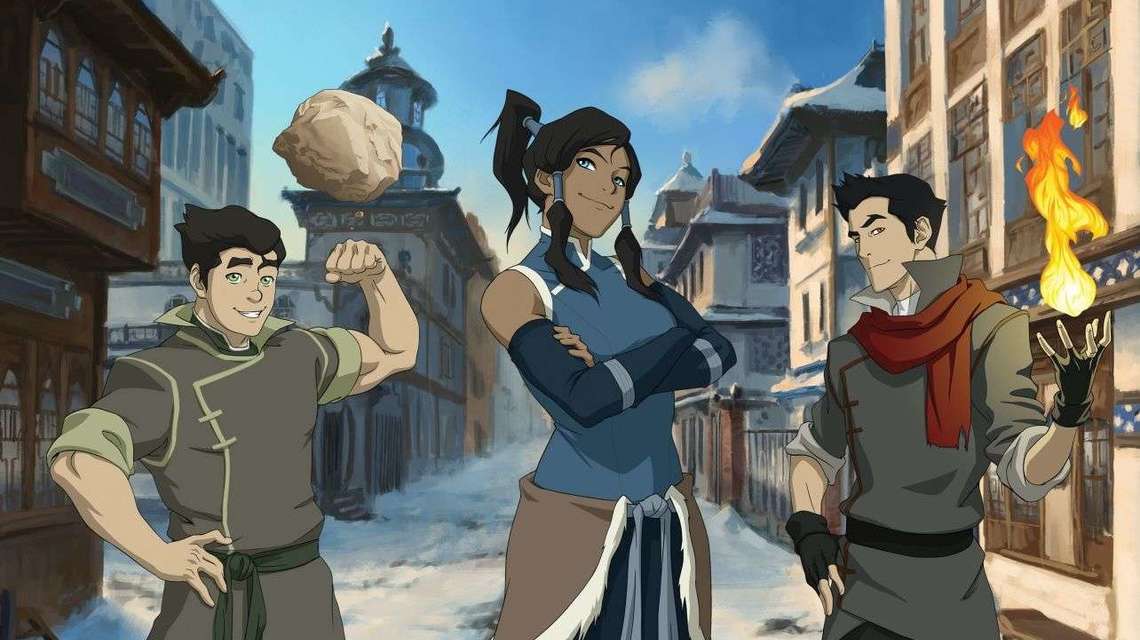
I almost always find myself disappointed when I read lists of the greatest animated television series of all time. The source of my disappointment is that Nickelodeon’s The Legend of Korra is typically included as a footnote when discussing the greatness of Avatar: The Last Airbender. As much as I love Avatar and believe the show deserves recognition, I believe referring to The Legend of Korra merely as a strong sequel series fails to capture Korra’s incredible quality independent of Avatar . I would go so far as to argue that The Legend of Korra is just as worthy of praise as Avatar: The Last Airbender. In terms of world-building, thematic focus, and representation, The Legend of Korra should be heralded as a significant achievement in animation.
While The Legend of Korra certainly benefited from the world-building done by Avatar, The Legend of Korra took that world in a bold, new direction. By killing off major characters and introducing new characters, locations, enemies, and abilities, The Legend of Korra is more analogous to HBO’s Watchmen than to Episodes VII through IX of Star Wars; that is to say, The Legend of Korra was not content with regurgitating battles and relationships that we had already seen. By setting The Legend of Korra in a steampunk world that perfectly wedded America’s Roaring Twenties to Avatar’s inspiration in East and South Asian culture, the show presented a world that was both familiar and dramatically distinct. And after the original show’s focus on the imperialistic Fire Nation, Korra’s struggles with a variety of villains with different philosophical and political beliefs meant the show could depict more nuanced conflicts. By utilizing and building onto the foundation laid out in Avatar, The Legend of Korra was able to explore a socially/politically/historically rich setting and examine remarkably different ideas.
While Avatar has been applauded for its critiques of imperialism, war, and discrimination, The Legend of Korra tackled its own weighty subjects. In its first season alone, Korra explored how the Occupy Movement would occur in the bending world. From there, the show went on to wrestle with such themes as colonialism, anarchy, national identity, and legacy. In many ways, Korra was a more mature series and went to darker places than its predecessor. These tonal differences were best seen in The Legend of Korra’s fourth season when the titular character underwent physical therapy and struggled with severe post-traumatic stress disorder. While darkness is not necessarily a sign or measure of quality, The Legend of Korra’s willingness to explore mature subjects like PTSD spoke to the show’s willingness to take risks and examine issues that a channel like Nickelodeon would normally avoid.
The Legend of Korra also made dramatic strides in regards to representation in animation. Avatar’s depiction of characters based on South Asian, East Asian, and Indigenous peoples was groundbreaking for an American cartoon. But The Legend of Korra took that representation to another level by making its protagonist a woman of color. Korra, as a brown woman representing Inuit culture, looked unlike almost all of the protagonists that preceded her in cartoon history. With the physique and bravado of an MMA fighter, Korra also defied tropes that have pigeonholed female animated characters for decades. And the reveal that Korra entered a same-sex relationship in the series finale also makes her a pioneering figure in the representation of different sexual orientations in children’s programming. Unfortunately, Nickelodeon failed to commit to this reveal.
In fact, Nickelodeon’s failures to adequately support The Legend of Korra is likely one of the reasons why the show never receives as much recognition and praise as Avatar: The Last Airbender. I first became aware of Nickelodeon’s reservations when the network panicked as episodes from season three leaked online. By punting the last five episodes of season three and the entirety of season four to online streaming after the leak, Nickelodeon essentially gave the show a vote of no confidence. But even before that, Nickelodeon went into the show’s production with cold feet because they were afraid boys wouldn’t want to watch an action show with a female protagonist. And by preventing the creators of the show from more explicitly depicting Korra’s romance with Asami, Nickelodeon totally undercut a landmark moment in animated television. So from pre-production to the release of the show’s finale, Nickelodeon failed to fully invest in The Legend of Korra.
Which is why Netflix’s decision to stream The Legend of Korra six years after its finale was released and why the show’s rise to the number one show on Netflix feel like vindication for the series. After living in Avatar’s shadow for so long and fighting for its existence in every stage of its production, The Legend of Korra’s renewed popularity suggests that Nickelodeon should have had more faith in the series. Seeing how well She-Ra and the Princesses of Power has done on Netflix and recognizing Steven Universe’s success on Cartoon Network, I wonder how much more appreciation The Legend of Korra would receive if Nickelodeon had done more to promote the show. So it’s well past time that we started to truly acknowledge the significance and quality of The Legend of Korra on its own merits rather than on its status as a sequel to one of the greatest animated series of all time. Nickelodeon failed the Legend of Korra, but fans of the show should not.

